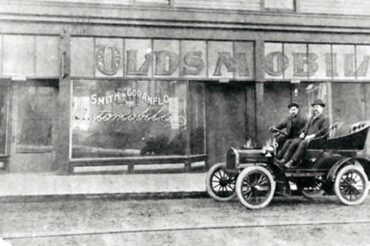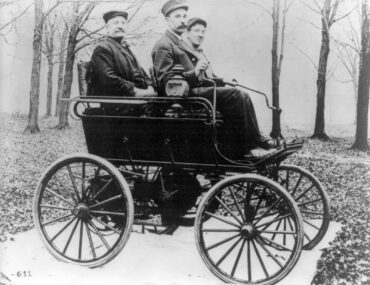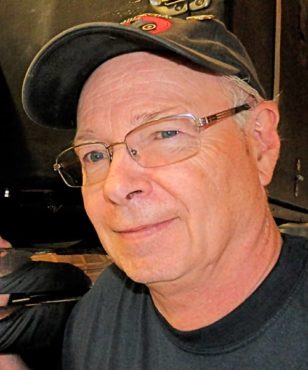
The beef I have with modern history is that as time marches on, it tends to be either watered down or rearranged to suit some purpose. Take, for example, the legend of Henry Ford. Madison Avenue would have you believing that he invented the first successful automobile and was the first to apply assembly line technology to that process. Neither could be farther from the truth.
It’s true that after failing twice, he was finally able to provide an affordable vehicle to the masses in 1908. Not to undermine Ford’s tremendous contribution to automobile development, but in the interest of recognizing actual historic facts, we must give a nod to Ransom Eli Olds.
As a young lad, Olds began experimenting with steam and gas engines. In 1897, he founded the Olds Motor Vehicle Co. By 1901, he had produced and sold an electric, steam and a gasoline powered vehicle.
A fire in 1901 burned the Olds Motor Works factory to the ground. Since the only vehicle saved was Curved Dash Runabout and he already had substantial orders for that car, Olds concentrated his efforts in that direction.

The little Olds sold for $650 and by 1904, he had sold over 7,000 of them (an unheard of number for that time). In 1901, Ransom Olds patented the first stationary assembly line used in the manufacture of the automobile. It wasn’t until 1913 that Ford came along and improved it.
After selling and subsequently leaving the company in 1904, Olds formed the R. E. Olds Motor Car Co. The name was changed to the Reo Motor Car Co. to avoid a lawsuit from the Olds Motor Works, his former business.
Reo was a major player in automobile production and in 1908 was third in sales behind Ford and Buick. Ransom Olds would leave the company in 1915 to pursue other projects.
He developed a rather large real estate interest outside of Tampa Bay, Florida (Oldsmar), and developed the first gasoline powered lawnmower. In 1934, he received a patient for the diesel engine to add to his growing portfolio.
Olds returned to Reo in the early 1930s in an effort to help save the company. That was a difficult time for automobile manufacturers and would prompt the development of the Franklin Olympic, the air-cooled Franklin engine in the REO body.
Both Franklin and REO ceased auto production shortly thereafter. Reo went on to produce trucks, eventually merging to produce the Diamond Reo trucks. Olds died in 1950 at the age of 86.
Sources: Horseless Carriage Gazette, volume 83 number 5; R E Olds Foundation; Wikipedia; Barnes Family Archive























